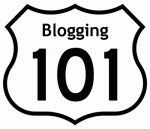I have already made blog posts about specific lessons that I have learned, such as how to blog effectively, ROI of social media , live twitter feeds at events (MacPirate), and team work. This blog post is meant to be about over-arching lessons I have learned about social media due to the SMRT CCE class. So overall I have learned learned many things.
***************
Properly Engage Social Media
This semester I have learned that it isn’t enough to just be on social media. Previous to this class I thought that as long as businesses had Twitter and Facebook accounts they were doing their job. However, I have learned that organizations must  effectively use these different social mediums. One must engage these mediums based on how they were designed to be engaged. For example, perhaps one would use Facebook to post photos after an event, but rather use Twitter at an event as a live feed (similar to how it was used at MacPirate).
effectively use these different social mediums. One must engage these mediums based on how they were designed to be engaged. For example, perhaps one would use Facebook to post photos after an event, but rather use Twitter at an event as a live feed (similar to how it was used at MacPirate).
—
Ethics
I have also learned about social media ethics. Before engaging social media I have learned to be aware of the policies that each medium has established. I was surprised to find out that it actually against Facebook’s policy to faci

litate a contest via Facebook and use “likes” as a way to vote. It is outlined in their policy that Facebook is not to be used in that way. However, I am allowed to use a third party application to host contest. I was particularly surprised by this because I have seen many organizations use Facebook to host contests and use “likes” as a voting mechanism. BUT…just because everyone is doing it, doesn’t make it right! I have also learned be more cautious of how I engage Twitter. It is very important to have transparent tweets. For example, if there is a twitter account registered under my name, it would be undesirable to get someone else to tweet on my behalf. This is because people would not be know who it really is, hence it is not honest or transparent.

BUT WHY DOES THIS MATTER? I have learned that being honest and transparent is very important on social media because otherwise it can destroy the reputation of yourself or your organization. It also isn’t fair to your followers or customers to be deceived. No one likes to be tricked so it is important to use an ethical plumb-line.
About Myself
I have learned a lot about myself and my interactions with social media. I now realize that before I engage social media I need to do the necessary preparation and research. Previously I would just jump right into different social media platforms. On a whim I signed up for Pinterest and randomly I signed up for LinkedIn. I did not really think about how to use these social mediums and thus “floundered” because I didn’t know what I was doing. I realize  there is nothing wrong with getting these accounts, however, once I had them I never used them because I didn’t know how. I was too busy to invest the time to learn them. The effects of these dormant accounts are not necessarily disastrous for me personally, but if I was organizing social media for an organization then it would be a waist of time. It could also be dangerous. If I didn’t know how to use these accounts the I wouldn’t know how to manage them. For example, I wouldn’t know how to deal with negative comments. Also, doing research before hand is important because sometimes it is NOT necessary for an organization to be on all social media platforms. Some platforms won’t help organizations meet their goals or communication objectives. Therefore I have learned that I need to always take a step back and be intentional with social media. I shouldn’t jump in to new platforms without a purpose.
there is nothing wrong with getting these accounts, however, once I had them I never used them because I didn’t know how. I was too busy to invest the time to learn them. The effects of these dormant accounts are not necessarily disastrous for me personally, but if I was organizing social media for an organization then it would be a waist of time. It could also be dangerous. If I didn’t know how to use these accounts the I wouldn’t know how to manage them. For example, I wouldn’t know how to deal with negative comments. Also, doing research before hand is important because sometimes it is NOT necessary for an organization to be on all social media platforms. Some platforms won’t help organizations meet their goals or communication objectives. Therefore I have learned that I need to always take a step back and be intentional with social media. I shouldn’t jump in to new platforms without a purpose.
























